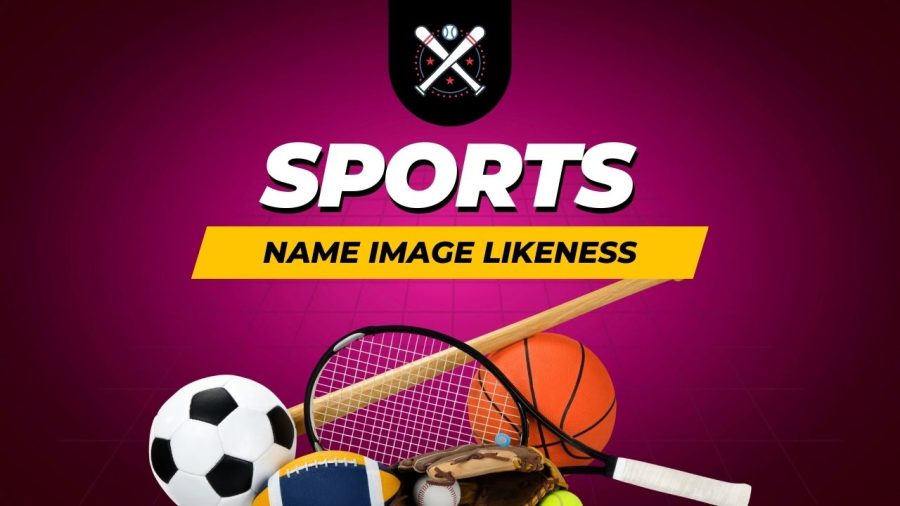Bill to allow ‘pay-for-play’ at high school level stalls in committee
Graphic by Margaret Edmonson (via Canva)
A state lawmaker has proposed expanding “pay-for-play” to qualifying high school athletes, a proposal athletic director Larry Hill calls “misguided.”
April 26, 2023
A proposed state law that would allow qualifying high school athletes to receive compensation for their names, images and likenesses has remained in the House education committee since March 7.
Texas Rep. Giovanni Capriglione, Keller-Rep., filed the bill that would grant high school athletes 18 years and older to gain compensation for name, image, and likeness, also known as NIL.
The bill – HB 1802 – would allow high school athletes in University Interscholastic League to engage in NIL related activities if they are 18 years or older and meet grade requirements.
Athletic director and head football coach Larry Hill called Capriglione’s proposal “misguided.”
“Why is an athlete any more special than other students who are not athletes?” Hill said. “Why should they get money for something that others do not?”
Twenty-four states, including the District of Columbia, allow high school athletes to receive NIL compensation. HB 1802 states student athletes must wait until they enroll in higher education to acquire NIL compensation.
“It opens the door to ‘who will pay me the most?’” Hill said. “Athletes now will not think twice about leaving their school, their community, their teammates to go and chase a better offer.”
The Dallas Morning News reported UIL deputy director Jamey Harrison was not sure there would be “much of an appetite” for NIL without legislation action.
“Until there is some movement there, there will be no change from the UIL,” Harrison told the newspaper, “and if there was movement there, we would have to see in what ways it moves, what kind of guardrail they put around it.”
Athlete Mia Perez, who participates in cross country, track and basketball, said she believed NIL would help athletes with recruiting.
“You can also save money and use it for college,” Perez said, “but most importantly you can be a role model for the local community and give back to important organizations.”
Team USA soccer player Alyssa Thompson and her younger sister Gisele were the first high school athletes to sign an NIL deal with Nike. Alyssa is the youngest person to play professional soccer, and she is still in high school. Alyssa is set to graduate this school year while Gisele will graduate next year.
McDonald’s All American Bronny James, a basketball player and the oldest son of LeBron James, has the No. 1 NIL evaluation set at $7.2 million, according to Sports Illustrated.
College athletes now have NIL endorsements helping their image, such as Louisiana State University basketball player Angel Reese, Alabama quarterback Bryce Young and Auburn gymnast Sunie Lee.
The NCAA’s “pay-for-play” has created chaos at the collegiate level with players moving on and new players moving in, Hill said. And it has even reached the high school level – Carroll quarterback Quinn Ewers decided to forego his senior year to enroll at Ohio State and sign a $1.4 million NIL agreement. (Capriglione’s children attend Carroll ISD schools.)
“High school players have great difficulty getting signed because there are a number of coaches who recruit few, if any, high school players,” Hill said. “They simply scour the transfer portal for some other college’s players.”


